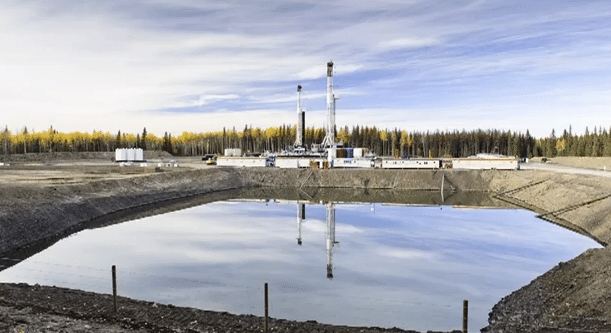If British Columbia wants to pursue economic, environmental and human health then the province must slow its furious pace of unconventional gas production, says a new report released by the Canadian Centre for Policy Alternatives (CCPA) and the Wilderness Committee. The CAPP report, part of their partner Climate Justice Project with the University of British Columbia, concludes that BC’s natural gas sector is putting the industry’s needs before those of British Columbians, and doing so with the government’s help.
Ben Parfitt of the CCPA authored the report and has written extensively on the energy/water nexus surrounding BC’s shale gas boom. According to Parfitt, “BC’s shale gas production is the natural gas equivalent of Alberta’s oilsands oil.” The comparison is due to the tremendous water required to frack deep shale deposits, an extraction process that also releases dangerous amounts of methane, one of the most powerful global warming gasses.
As expanded in the report, Fracking Up Our Water, Hydro Power and Climate: BC’s Reckless Pursuit of Shale Gas, the unconventional gas industry enjoys exclusive access to the province’s pristine water resources and the government’s lax greenhouse gas (GHG) policy. Last year, the Pacific Institute for Climate Studies (PICS) announced that if BC wants to meet its climate targets, the regulatory regimes surrounding unconventional gas production must become significantly more strict and forward thinking. But despite such a warning, no meaningful administrative changes have been made to suggest the BC government is listening.
Given the favorable conditions, says Parfitt, gas production in BC could amount to 22% of North American annual production by 2020.
This steady increase in production will drastically impede BC’s ability to reach its legislated climate targets. If BC production climbs to these accelerated rates the province’s GHG emissions from fracking will double, reaching an astounding 22 million tonnes by 2020. The tremendous atmospheric pollution caused by fracking means that, if BC plans on meeting is climate targets, “every other sector of the provincial economy will have to cut their emissions in half,” according to CCPA’s press release.
But there’s more to fracking the province’s northeast than water and GHG emissions. If the shale gas industry “expands as projected, shale gas companies will need two to three times the amount of power that the proposed Site C dam would provide. In other words, large amounts of publicly owned clean water and hydro power will have to be found to produce more and more dirty fossil fuel,” says Parfitt in the press release.
“I don’t think British Columbians are comfortable with that.”
As DeSmogBlog reported last week, the province has earned an industry-friendly reputation recently for its generous water policy and nearly absent regulatory structure. Due to the generosity of the government and a total absence of any public consultation process the BC Tap Water Alliance has called for the resignation of Energy Minister Rich Coleman.
And although British Columbians will suffer much of the pollution and resource depletion, the gas industry is preparing to export incredible amounts of BC’s gas to Asia via the Kitimat LNG terminal. To worsen the overall deal, Parfitt exposes the heavy reliance of tar sands production on BC gas, making the climate and resource costs associated with the process even higher.
Projects from the non-gas industrial sector in BC are subject to scrutiny from the BC water stewardship branch. However, the BC Oil and Gas Commission freely allocates water to the gas industry, often without significant environmental review or charge. The government, not surprisingly, has been accused of facilitating, rather than regulating, the industry.
In order to secure BC from the threats to economic, environmental and human health that the rush to extract fracked gas poses, Parfitt recommends a cap on annual shale gas production, an end to all government subsidies of the natural gas industry, that the BC government explain its climate strategy, and that the industry pay full prices for the water and electricity necessary to support their projects.
According to Tria Donaldson, the Pacific Coast Campaigner for the Wilderness Committee, “it’s time to curb this industry before it’s too late for our climate, our water and our hydroelectric resources.” There also need to be limits put on the industry as well. “We want firm no-go zones established where industry activities are restricted and we want a moratorium on fracking in undeveloped watersheds, pending full surface water and groundwater studies.”
Parfitt seems to agree: “We need to manage this industry for wind-down, not wind-up, and ensure that while the industry is operating the public gets a fair return.”
To get a better picture, you can watch this CCPA video of what fracking means in BC‘s northeast:
Subscribe to our newsletter
Stay up to date with DeSmog news and alerts






